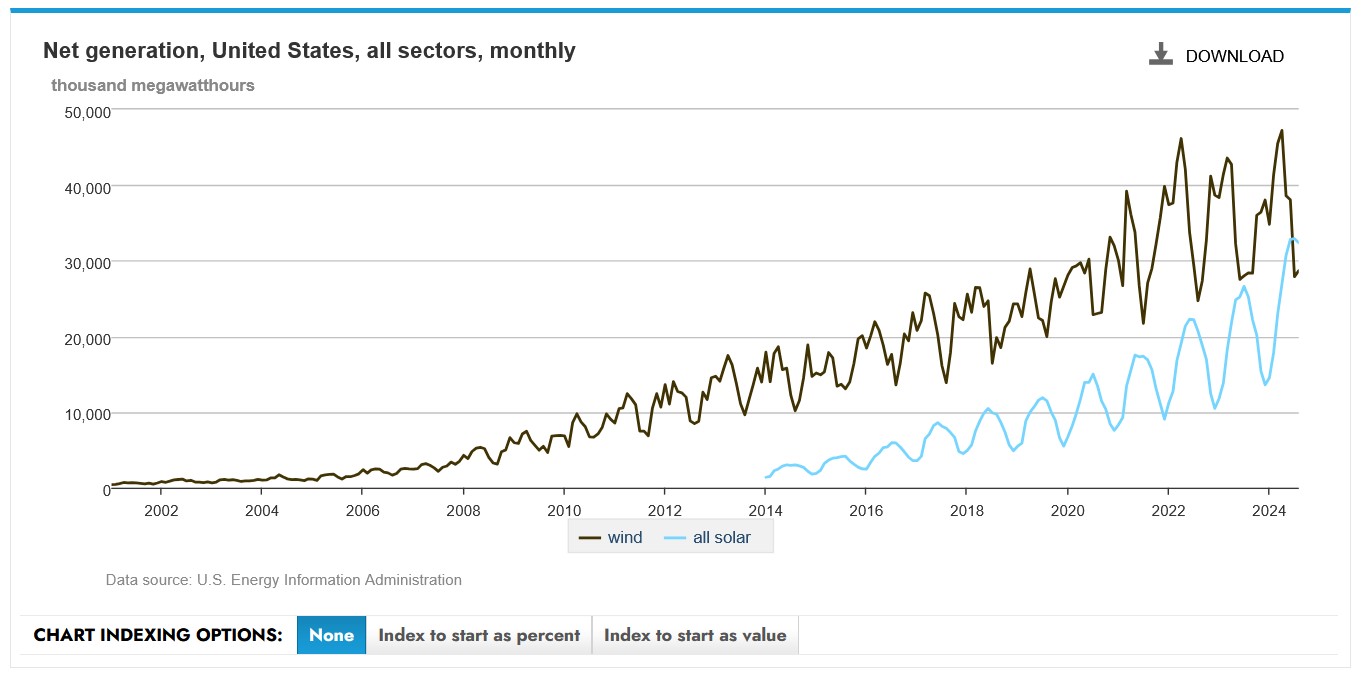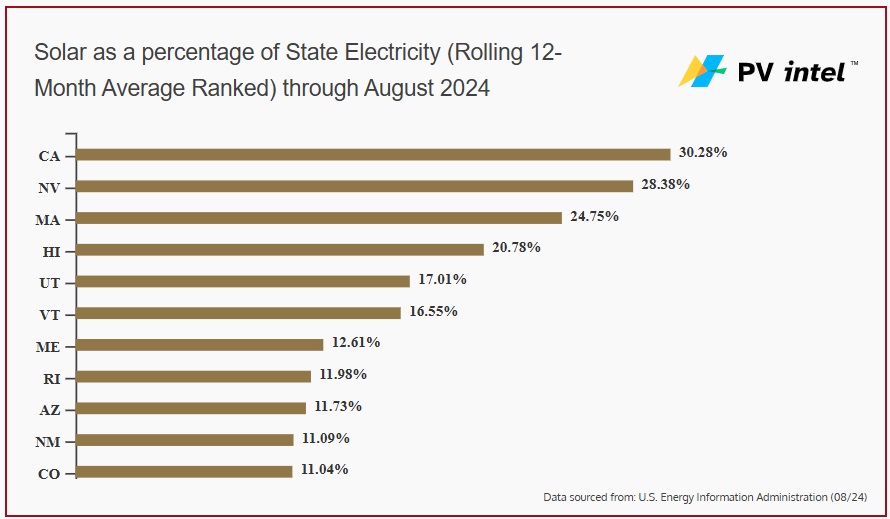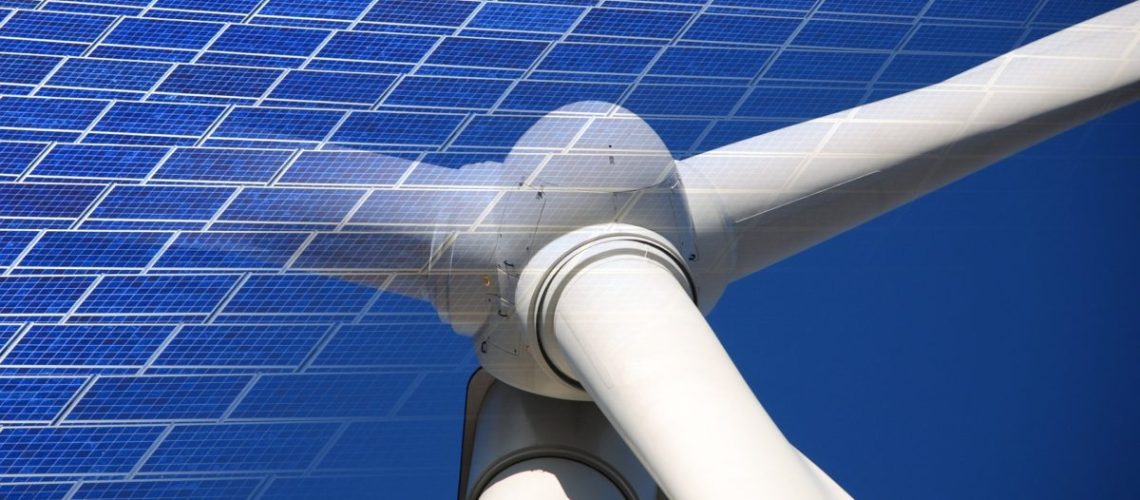For the first time, solar photovoltaics generated more electricity than wind in a single month, according to the EIA.
For the first time in U.S. energy history, solar photovoltaics overtook wind in monthly electricity generation. According to the U.S. Department of Energy’s Energy Information Administration (EIA), solar accounted for 7.41% of electricity generation in July and 7.42% in August. By comparison, wind contributed 6.36% and 6.65% during these same months.
Despite this milestone, wind power still dominates on an annual basis, producing 76% more electricity than solar in 2023, and is expected to take back its leading position as solar generation tapers off during the winter months.
Solar’s recent rise is not unexpected. While wind and solar combined grew by 4.5% in 2023 compared to 2022, all of this growth came from solar as wind generation declined. The higher upfront costs of wind power, coupled with inflationary pressures, have created challenges for the wind sector, while solar continues to expand rapidly.
“This trend has been looming for three years, as peak wind generation growth has seemingly stalled,” said Devin Gionanni, a coder and data analyst at PV Intel who first noticed the shift.
According to net generation data from the EIA’s Electricity Data Browser, solar not only surpassed wind in percentage terms for the last two months reported, but it also set record-high monthly generation volumes during the summer months of 2024.

Solar power generation for 2024 peaked in May, reaching 8.56% of total electricity production. Its seasonal low is expected in December or January, with January 2024’s figure at 3.75%.
This August, solar accounted for 7.42% of all electricity generation, a figure nearly 28% higher than the 5.80% recorded in August 2023, according to the EIA’s Electric Power Monthly. Over the past year, solar’s 12-month rolling average has continued its steady climb, now reaching 6.41% of all U.S. electricity generation.

In another milestone, California has surpassed 30% of its electricity coming from solar power over the past 12 months. This accomplishment was made possible by significant additions of energy storage capacity, which enable greater utilization of solar energy during the day. By storing excess generation and releasing it during the evening peak demand period, energy storage has greatly reduced the need for curtailment.
In 2023, California also saw over 100 days where renewable energy met 100% of electricity demand at some point during the day. These achievements underscore the transformative role of solar and energy storage in reshaping the U.S. energy landscape, pushing boundaries and driving innovation in grid management.
Popular content




